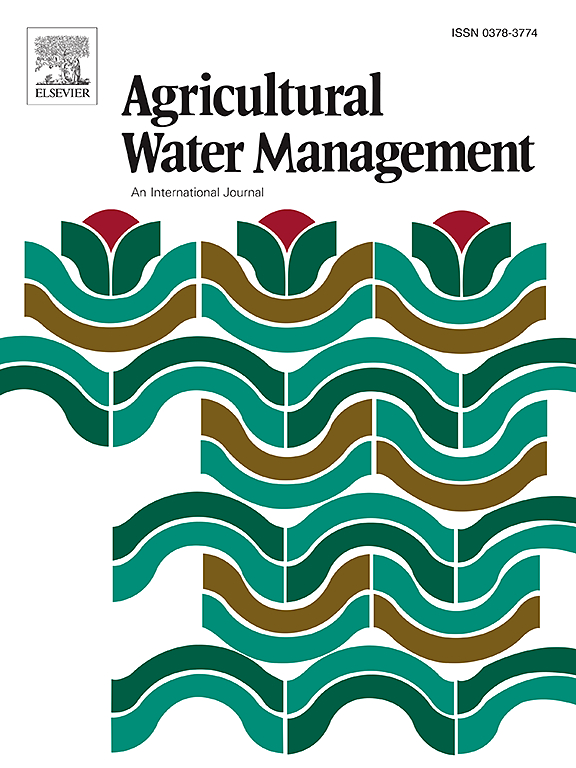Analysis and quality control of weighing lysimeter water storage data
IF 5.9
1区 农林科学
Q1 AGRONOMY
引用次数: 0
Abstract
A tool was developed to analyze 5-minute weighing lysimeter apparent relative water storage data and reduce it to values of the water balance components, including evapotranspiration (ET), dew and frost accumulation, precipitation, irrigation, and drainage while applying quality control measures. Algorithms automatically identify precipitation, and dew and frost accumulations in the 5-minute data, and place flags appropriately (“P” or “DW”) in a column that is referenced by formulae that separately calculate values for these. Noise can, however, cause false identification of precipitation or frost and dew accumulations, so another column is made available in which the user can enter flags to either nullify (“NO”) false automatic identification, or conversely, identify precipitation or dew and frost accumulations (“P” or “DW”) not automatically identified. This column also serves for entry of specific flags identifying, amongst others, apparent relative water storage changes due to irrigation, drainage tank emptying, and counterweight adjustments. Other algorithms act upon these flags to correct and adjust the original raw relative storage values so that the adjusted relative storage reflects only ET. Two different methods of ET calculation provide for error checking and data validation. The spreadsheet was applied to 30 + years of 5-minute lysimeter data. Example data from 2018 illustrate the processing and quality control procedures.
称重渗滤仪储水数据分析及质量控制
开发了一种工具来分析5分钟称重蒸渗仪的表观相对储水量数据,并将其简化为水分平衡成分的值,包括蒸散发(ET)、露水和霜积累、降水、灌溉和排水,同时应用质量控制措施。算法自动识别5分钟数据中的降水、露水和霜的积累,并在一个列中适当地放置标记(“P”或“DW”),该列由单独计算这些值的公式引用。然而,噪声可能导致降水或霜霜积累的错误识别,因此提供了另一个列,用户可以在其中输入标志来取消(“NO”)错误的自动识别,或者相反,识别未被自动识别的降水或霜霜积累(“P”或“DW”)。这一栏也用于特定标志的输入,其中包括由于灌溉、排水水箱排空和配重调整而导致的明显的相对储水量变化。其他算法根据这些标志来纠正和调整原始相对存储值,使调整后的相对存储仅反映ET。两种不同的ET计算方法提供了错误检查和数据验证。该电子表格应用于30 + 年的5分钟溶渗仪数据。2018年的示例数据说明了加工和质量控制程序。
本文章由计算机程序翻译,如有差异,请以英文原文为准。
求助全文
约1分钟内获得全文
求助全文
来源期刊

Agricultural Water Management
农林科学-农艺学
CiteScore
12.10
自引率
14.90%
发文量
648
审稿时长
4.9 months
期刊介绍:
Agricultural Water Management publishes papers of international significance relating to the science, economics, and policy of agricultural water management. In all cases, manuscripts must address implications and provide insight regarding agricultural water management.
 求助内容:
求助内容: 应助结果提醒方式:
应助结果提醒方式:


